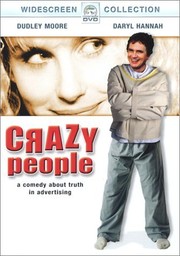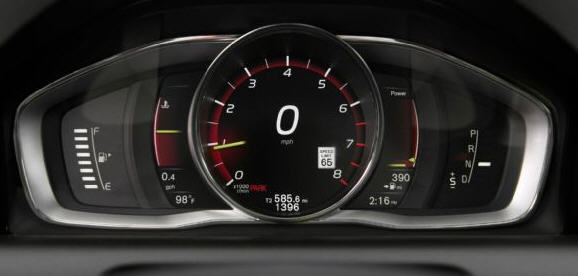Safety Through TechnologyBy Wayne Maruna
The 1990 film Crazy People was sub-titled “a comedy about truth in
advertising.” Dudley Moore portrayed an advertising executive who
suffers a nervous breakdown and goes on to create a series of
“truthful” advertisements, blunt and bawdy and of no use to his
boss. One of the more memorable ads was “Volvo – they’re boxy but
they’re good”.
So here it is 25 years later,
and I am driving a new Volvo. I picked it up a week ago as I
write this. I never pictured myself driving a Volvo, and how I
came to decide on it is beyond the scope of this article. Our
last vehicle purchase was in mid-2010, and I will tell you that the
advance in technology being built into automobiles is mind
boggling. I’m not talking about the hidden mechanical stuff that
goes into making 4 cylinder engines perform like V6s or allows cars to
go 100K miles between tune-ups. I’m talking about the actual driver
experience. Sitting behind the steering wheel, I feel like I am
driving a computer and everything between that steering wheel and the
firewall is a user interface, almost like a computer monitor.
Case in point – the gauge package. Don’t like the looks of
it? You can change it with a couple of button presses. The
gauges look like real mechanical gauges, but they’re not. They’re
‘virtual’ gauges on a computer screen. You have your choice of three
‘themes’: Elegance, Eco, and Performance. As you’re driving down
the road, a diminutive speed limit sign displays in the round
speedometer. It uses info obtained by the GPS system to figure
out where you are and determine what the speed limit is in that stretch
of road. It’s not perfect and it tends to lag as you go through a
speed limit change, but for the most part it is accurate. I just
hope it’s not tied into any law enforcement electronics, because if you
exceed the speed limit (which, ahem, I have only done to test the
system) the speed limit indicator will briefly flash at you, then
thankfully leave you alone.

Volvo
has a reputation for emphasizing safety in their designs. They are
enhancing that reputation by applying loads of safety-related
technology into their cars. One of my favorite safety features is
something Volvo calls BLIS, which is their blind spot information
system. This is an option offered by most car makers, and I just
love it. When you’re on the road and a car is in an adjacent lane
approaching a rear quarter panel of your car, an orange light glows
near your front outside mirrors to alert you to that fact so you don’t
attempt an ill-advised lane change. As someone who is aging and whose
neck doesn’t swivel like it once did, I really appreciate this feature.
Speaking of lane changes, the vehicle is equipped with a lane
departure warning system. I met up with it unexpectedly. We
were driving the car home from the dealer via Airport Rd, which as any
Taberna resident will tell you is desperately in need of
widening. As we drove along, we kept hearing a rapid chiming
noise. My wife told me I better take the car back to the dealer
and see what was wrong. Well, I figured out that what was wrong
was that I wasn’t doing a very good job of keeping the vehicle within
the painted lane markings. It’s not just me - watch anyone drive
down that road, hugging either the outside line or the middle divider
line because the road is so narrow. The chiming was the lane
departure warning system telling me to literally get my butt back on
the straight and narrow. There is an option to turn it off, but I
think it is too valuable to do so. It will also trigger if you change
lanes without using your turn signal indicator, which is added
incentive to do so.
The ‘Pedestrian and
Cyclist Detection with Full Auto Brake’ system has a feature that helps
detect pedestrians and applies the brakes to help slow or stop the
vehicle. It uses a radar sensor which is also used by the adaptive
cruise control system, which maintains a selected distance, measured in
car lengths (which you select), from the car ahead of you when using
the cruise control. So if you’re in a 55 mph zone and the person
ahead slows to 50 mph, the system slows you down to maintain that 4-car
(e.g.) distance until such time as you disengage or change lanes.
The system works. It explained why I had my cruise set for 50
going down Hwy 70 in James City, but I was only going 45 because I was
coming up on the person ahead of me who was only doing 45.
The radar sensor is integral to what Volvo calls the City Safety
System which is designed to help avoid low speed collisions when
driving in slow-moving, stop-and-go traffic. It functions when
the car is going between 3 and 30 MPH, and will trigger brief, forceful
braking if it senses that a low-speed collision is imminent. The radar
sensors also work in conjunction with cameras to assist in avoiding
crunching sounds when parallel parking a vehicle. Similarly, the
audible and visible alerts of the cross traffic warning system has
saved my bacon a couple times already while backing out
of driveways and not seeing vehicles in the road about to cross my
path. The system is like having another backseat driver with
better eyes.
And of course, I could not call
the vehicle a rolling computer unless it offered internet connectivity,
which it does.
When all these features become
overwhelming, you can elect to view the owner’s manual on-screen in the
dash. I’ve become a frequent reader of that manual out of necessity.
Volvo is not alone in these high-tech safety offerings. Most car
manufacturers offer them in their mid-to-upper line cars, and the
government is mandating that rear cameras be added to all vehicles. If
you find yourself in the market for a new vehicle, do consider the
available safety options that technology has made possible. They
tend to be pricey, but they could easily pay for themselves, and might
even save your life.


